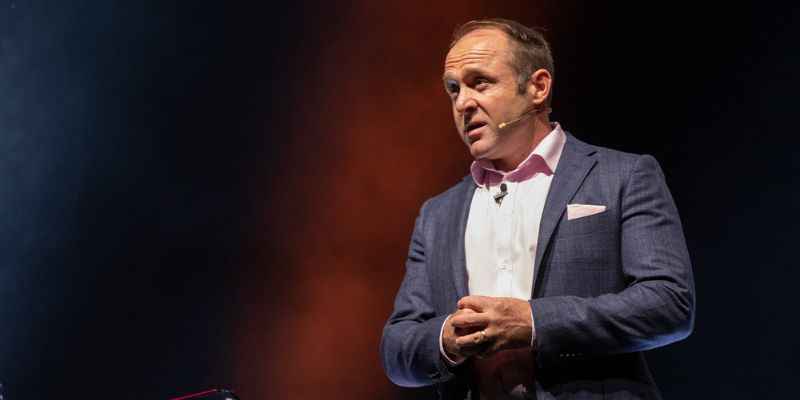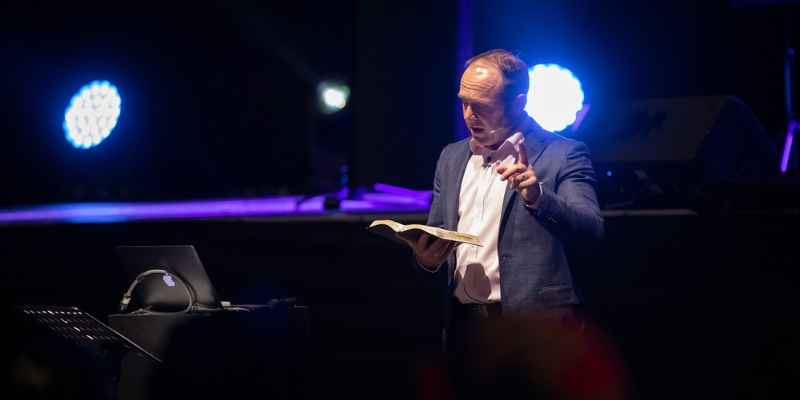Introduction to Catholic Leadership
For many years I’ve had the privilege of speaking around the world on the topic of Catholic leadership. One of the first principles I always seek to make clear to every Catholic audience is that the term itself presents us with one big challenge; what actually is leadership? Until we can define what leadership is in itself, it is going to be difficult trying to describe how the adjective Catholic conditions the noun leadership.
I begin by asking my audience to imagine that they are sitting in the back row of a global zoology conference. Sitting all around are some of the world’s greatest veterinary scientists and zoologists. On the main screen is placed an image of a cat. Imagine, then, that the audience of eminent global experts is asked to describe what it is that they see on the screen. It’s fair to say that they will eventually agree that it is, in fact, a cat. Perhaps one expert might use the Latin descriptor and state that it might also be labeled a felis domesticus. Even so, we can agree that there would be no great debate about what it is that they see on the screen before them.
An Initial Definition and the Importance of Leadership in the Catholic Context

Now we take our thought experiment into the realm of leadership. Imagine, instead of zoologists describing cats, you are now sitting at a conference with 100 of the world’s greatest leadership experts. On the screen, instead of a cat, are placed the words, “What is leadership?” In contrast to the zoologists, you won’t have consensus. In fact, it’s possible that you may end up with as many definitions for leadership as there are experts in the room. That’s a problem. How do you come to grips with a phenomenon so central to human experience and human culture and human flourishing without an agreed upon definition?
When I completed my first Masters level program in Educational Leadership and Management I remember thinking about defining leadership in the way that a US Supreme Court judge once famously defined p*rngra*phy. He said, “I know it when I see it! In a sense leadership is somewhat similar. Its definition may be contested but we know it when we see it. All of us can look back over our lives and think of men and women we have worked with or known in some capacity who seemed to model something unique in terms of leadership. We may have felt encouraged, or valued or empowered or trusted. We can look back and recall some sense of being able to do more than we would have been able to do on our own. A good Catholic leader believed in us, they resourced us and we wanted to reward that belief by bringing our full gifts and talents and energy to the task before us. With a good leader behind us, the mountain seemed that much more climbable.
Reflections on Catholic Leadership: Navigating Contrasts and Consequences
In contrast we can all, no doubt, look back and remember the contrasting experience of working with Catholic leaders who did the exact opposite. We can all, most likely, recall so-called leaders who were chaotic, critical or even psychological predators. These negative experiences are particularly damaging in terms of Catholic leadership. These experiences hurt people, damage communities and create toxic cultures that no one wants to be a part of. We may not expect Catholic leaders to be perfect but deep down we hope they won’t be downright dangerous. In an adjacent sense this is another reason why the abuse scandals of the 20th century were so traumatic. We looked to various Catholic leaders such as Catholic priests, Catholic bishops or Catholic lay people to model something of the servant leadership of Christ and we got the exact opposite.
So whether our experience of Catholic leadership so far has been positive or negative, and even if we don’t have a perfect academic definition for leadership, we can mostly agree that either way, we do know it when we see it. We’ve all, for better or worse, experienced it.
Attempting an initial definition of Catholic leadership
So, despite the complexity of defining leadership and, more specifically, Catholic leadership, let us attempt a definition. The way I tend to do this is by borrowing an insight from John Maxwell, one of the more influential leadership speakers of the later 20th century. Maxwell, approaching the complexity of the leadership definition question in a manner similar to the way that Alexander the Great approached the Gordian knot, stated, “Leadership is influence.” How do you know leadership has happened? It’s because influence has happened. People, families, schools, businesses or nations have changed in some meaningful way. They have been influenced to change by someone who led them to do so.

Importantly, there are many ways to influence. For example, Josef Stalin was a master of human influence. He managed to influence about 40 million people to die long before their time. His preferred methods of influence included mass starvation, summary execution and the Gulags. Mother Teresa of Calcutta was also able to influence millions of people. We can, no doubt, agree that she chose different methods.
It’s crucial to understand that the type of influence that takes place is conditioned by the character of the leader. A good character creates positive influence.This is what Aristotle understood so well and explored in his Nicomachean Ethics.
A Quick detour into Virtue Ethics
If leadership is influence and influence is conditioned by character then what is character? In Catholic thinking character is essentially what we become due to the sum total of our choices. Again, following the bedrock principles of Classical Greek philosophy, we become what we chose. I explain this to an audience with an example from Doestoevky’s towering masterpiece, Crime and Punishment. In the novel the protagonist appears at the start of the story as a man contemplating committing murder. At that point, his character, his identity, is simply that of a man thinking about a possible course of action. If you were to define him you would simply say, “He is a man thinking about murder.’ Shortly after, when commits the deed there is a change in his identity, a change in a fundamental aspect of his character. He transforms into someone thinking about murder to actually being a murderer. His actions have changed his identity and his character.
In terms of Catholic leadership this is significant. If leadership is influence and influence is character then the type of influence created by the individual Catholic leader will be determined by their character which is determined by their choices. As the leader seeks by grace and sacrament and prayer and by trying to conform their will to what is true, good and beautiful then their character is changed and the influence they bring to bear as a leader, also begins to change. We will deal with this more in subsequent articles but for now, it is hoped that the reader can see the deeply spiritual and moral nature of Catholic leadership. It is moral because choices always involve perceptions of what is good and what is not good. This is the essential meaning of morality – to choose between good and evil. Catholic leaders need to aspire to the wisdom granted by the Holy Spirit. This wisdom helps them to choose wisely. These wise choices shape who they are. Who they are shapes what they do. What they do determines their influence.
What Is the Influence of Catholic Leadership Ultimately For?
In short, Catholic leadership is a descriptor for the influence that Catholic men and women in leadership roles make manifest in the world. However, it is not just arbitrary influence based upon the idiosyncratic personality of each leader. Catholic leadership has a unique teleology. Catholic leadership is all about the ability of Catholic leaders to do one main thing; help others come to know, love and serve Jesus Christ in the concrete circumstances of their vocational life. Catholic leadership is, in its essence, if it desires to be authentic, christological. If Catholic leadership loses that dimension, it may be many other things, but it’s no longer Catholic.

For example, you can have a school with a Catholic name that may be under the authority of the local Catholic bishop. It may have a baptized Catholic as its principal. It may have mission statements and prayer and liturgies. It may have stellar academic and co-curricular outcomes. It may have leaders with MBA’s from Harvard…But here’s the question;
“If no one at that school is growing in intimacy with Christ, if no one is growing deeper in relationship with the Catholic Church that He established, is the leadership Catholic?”
To put it another way, if the purpose of Catholic leadership is to influence people toward deeper intimacy with Jesus Christ and almost no one is taking that journey, then is that home or school or business or diocese or nation experiencing genuine Catholic leadership?
As you ponder these opening questions I am going to start working on the next piece in this series. In the next post I want to help you see that Catholic leadership is something that has enormous global influence and yet simultaneously influences the smallest communities such as a Catholic classroom or family. Whether you run a nation, a global corporation or the only person you are leading us yourself, there will be important insights for you.

If you are not on my list then make sure you use the form below so I can immediately send you the next installment.






